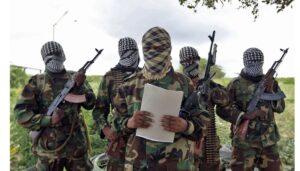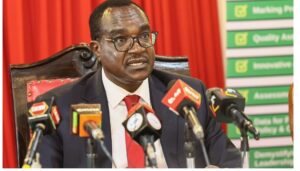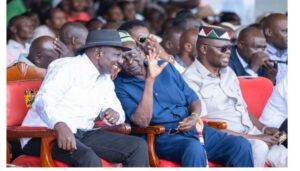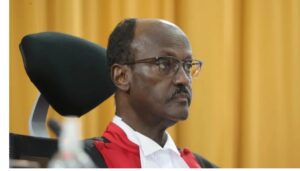Supreme Court upholds election of William Ruto as President-Elect as it dismisses Raila’s petition; Full findings
Supreme Court upholds election of William Ruto as President-Elect of Kenya as it dismisses Raila’s petition challenging the presidential election.
The Supreme Court of Kenya led by Chief Justice Martha Koome has held a unanimous decision upholding the election of William Ruto as the President-Elect of the republic of Kenya.
The judges comprise Chief Justice Martha Koome, Deputy Chief Justice Philomena Mwilu, Isaac Lenaola, Smokin Wanjala, Ibrahim Mohammed, Njoki Ndungu, and William Ouko.
Reading the verdict on Monday, Chief Justice Martha Koome dismissed Raila Odinga’s petition in all accounts based on nine key issues which were highlighted during the pre-trial conference.
Azimio’s Raila Odinga and Martha Karua had filed a petition challenging the outcome of the presidential election.
Full Findings
Whether the technology deployed by IEBC met standards of integrity, verifiability, security, and transparency to guarantee accurate and verifiable results.
“Upon considering all the pleadings, submissions and all the ICT scrutiny of the vote tallying and recounting report which fully examined the IEBC’s elections system, we are not persuaded by the allegation that the technology deployed by the IEBC failed the standard of article 86 (a) of the Constitution on integrity, verifiability, security and transparency to guarantee accurate and verifiable results,” Koome said.
“We are not persuaded by the allegation that the technology deployed by the IEBC failed the standard of Section 86 (A) of the constitution on integrity, verifiability, and transparency for the following reasons.
“In our view, the petitioners failed to produce evidence to the contrary,” she added.
Whether there was interference with uploading and transmission of forms 34A from polling stations to the IEBC public portal.
“There were no significant differences captured between the Forms 34A uploaded on the public portal and the physical Forms 34A delivered to Bomas that would have affected the overall outcome of the presidential election,” the CJ ruled.
Whether there was a difference between forms 34A uploaded in the portal and those received at the National Tallying Centre and forms 34A issued to agents at polling stations.
“No credible evidence was to support the allegation that Forms 34A presented to agents differed from those uploaded on the public portal,” Koome said adding that, “We have found none,” on whether there was any evidence to that effect.
Whether postponement of gubernatorial elections in Kakamega and Mombasa counties, parliamentary elections in Kitui Rural, Kacheliba, Rongai and Pokot South and Nyaki West and Mukuru kwa Njenga wards resulted in voter suppression to the detriment of the petitioners in petition number E005/2022.
Supreme court not convinced that postponement of the Mombasa and Kakamega governor elections amounted to voter suppression, but admits IEBC should have been more diligent in preparations.
“As regarding this allegation, it has not been sworn that by postponing the elections in the named electoral units, IEBC acted in bad faith or was influenced by irrelevant considerations,” Koome said.
“From the explanation tendered, we are satisfied that the postponement was occasioned by a genuine mistake which in our view could have been avoided had the IEBC staff been more diligent when they went to inspect the templates in Greece where the printing of ballot papers was undertaken,” she added.
“In the absence of any empirical data as a matter of fact or evidence that the postponement affected voter turnout of which the first petitioner alone suffered a disadvantage,” Koome ruled.
Whether there were unexplained discrepancies between votes cast for presidential candidates and other positions.
“IEBC has proffered a plausible explanation for the vote differential citing category of voters who only vote for presidents such as prisoners and diaspora.
Allegation 5; there were discrepancies between the number of votes cast in favour of the presidential candidates and those cast for candidates in the other 5 elective positions.
Whether IEBC carried out verification, tallying, and declaration of results in accordance with provisions of articles 138 (3) (c) and 138 (10).
“We find that pursuant to Article 138 (3)(c) of the Constitution, the power to tally and verify presidential election results as received at the national tallying centre not in the chairperson of IEBC but in the commission itself.”
Divided commission
The Supreme Court held that the power to verify vests in the Commission itself.
The chairman cannot arrogate himself powers to tally the results at the exclusion of other commissioners.
However, the court added that the 4 commissioners actively participated in the verification and took turns to announce the results Martha Koome, CJ
“But the 4 Commissioners actively participated in the tallying and verification of results. So the events on 15th August came as a surprise (The Serena event vs the results announcement).”
50%+1 vote constitutional target
Supreme Court ruled that President-elect William Ruto attained 50%+1 vote of all the votes cast in accordance with Article 138 (4) of the Constitution.
…the petitioners didn’t present a watertight case to warrant the setting aside of results declared by the IEBC Chairman.7,106,569 was the 50% of total votes cast in the presidential election. President-elect exceeded this amount and attained 50%+1 of the votes…’
Irregularities and Illegalities
There were no irregularities and illegalities of such magnitude as to affect the final result of the Presidential Election- Supreme Court. We have a president.
Also read,
Uhuru Kenyatta makes an unpublicized return to Nairobi amid the Supreme Court ruling
Raila sends Kenyans message ahead of Supreme Court ruling
Follow us




